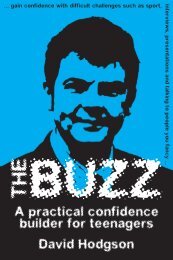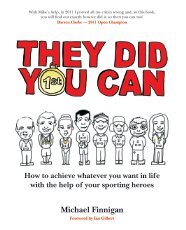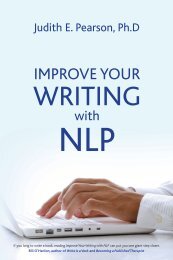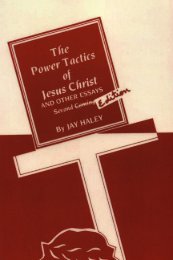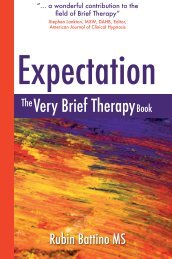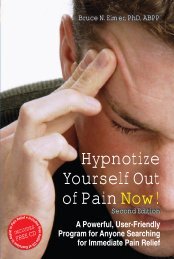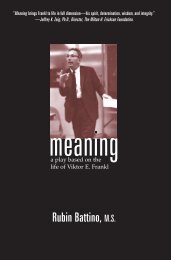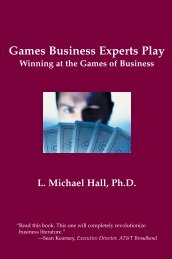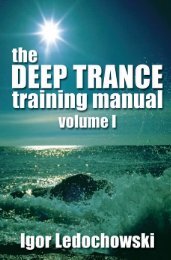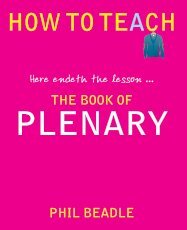Nigel Holt and Rob Lewis - Crown House Publishing.
Nigel Holt and Rob Lewis - Crown House Publishing.
Nigel Holt and Rob Lewis - Crown House Publishing.
You also want an ePaper? Increase the reach of your titles
YUMPU automatically turns print PDFs into web optimized ePapers that Google loves.
34 | A2 PSYCHOLOGY: THE STUDENT’S TEXTBOOKAgain, some straightforward mathematics cansimplify it further to:10 (11)U B=80+ –742This is equal to:U110B=80+ –742which equals:so finallyU B=80+55–74U B=61Step 4: Select the smallest value of U <strong>and</strong> consultthe tables for a critical valueIn our case, the smallest value of U calculated wasU A: this is our observed value at 19. We now needto consult the table of critical values for the Mann-Whitney. To do this we need to know the numberof participants in each group. We had eight males<strong>and</strong> ten females, so we read across the top of thetable until we reach 8, <strong>and</strong> we then read down tothe N=10 line.A portion of the table is reproduced for you here,but make sure you refer to the real table in theappendix of this book to be sure you know how toread it.N17891011N27 8 9 10 114 6 7 9 106 7 9 11 137 9 11 13 169 11 13 16 1810 13 16 18 21You can see that the critical value of U for N of8 <strong>and</strong> N of 10 is 11. If your value of U is equalto or less than the critical value then you can sayconfidently, with 95% certainty, that your resultsdid not happen by chance.Our value of U was 19. This is not smaller than11, so we cannot reject our null hypothesis. Eventhough the graph <strong>and</strong> the descriptive statisticssuggested that it might be the case, we cannot saywith confidence that women are indeed better atdoing more than one task at once. This is a verygood example of why we should always do thestatistics! If we had not done so, we might havemade the error of rejecting our null hypothesisby mistake, <strong>and</strong> accepting our hypothesis eventhough the difference could well have happenedby chance.Chi-square (c 2 )Chi-square test (pronounced ‘ky square’) is oftenwritten as c 2 . We use this test when we have numbersof people in different categories. Here’s anexample from earlier, to help clarify what we mean:‘Researchers are investigating whether psychologystudents <strong>and</strong> maths students revise differently <strong>and</strong>whether this influences test scores. The two methodsused are cramming information or organisedrevision. Students can be either psychology ormaths students (not both) <strong>and</strong> they may be organisedlearners or crammers (not both).’In this case we have a group of psychology students<strong>and</strong> a group of maths students. The rule isthat we cannot have a student studying both. Eachof our subject groups is split into two according tothe revision style of its members: those that cramfor exams (crammers) <strong>and</strong> those that revise in anorganised way (organised).To summarise, students can be in one of four completelyseparate categories. These are as follows.1. Psychology: Crammers2. Psychology: Organised3. Maths: Crammers4. Maths: OrganisedWhat’s important here is that no one can be inmore than one group. The Chi-square test looks atwhether the number of students in each categoryis different from what we might expect just bychance. In this way the test tells us whether thenull hypothesis (that something happened bychance) can be rejected or not, thus allowing us tomake a decision about our hypothesis.Aim:We are interested in whether the type of revision(cramming or organised) works differently for differentsubjects.Hypothesis:There will be a difference in the effectivenessof different types of revision depending on thesubject.Null hypothesis:There will not be a difference in the effectivenessof different types of revision depending on thesubject.Operationalising the variables:A self-report questionnaire of psychology <strong>and</strong>maths students asks them to identify the type ofrevising they do, cramming or organised revision.Extract from A2 Psychology: The Student’s Textbook © <strong>Nigel</strong> <strong>Holt</strong> <strong>and</strong> <strong>Rob</strong> <strong>Lewis</strong> ISBN: 9781845901004 www.crownhouse.co.uk



